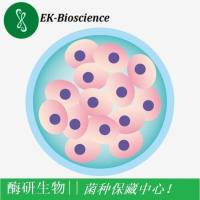Fluorescent Protein Specific Nanotraps to Study ProteinProtein Interactions and Histone-Tail Peptide Binding
互联网
537
Fluorescent proteins are widely used to study protein localization and protein dynamics in living cells. Additional information on peptide binding, DNA binding, enzymatic activity, and complex formation can be obtained with various methods including chromatin immunoprecipitation (ChIP) and affinity purification. Here we describe two specific GFP- and RFP binding proteins based on antibody fragments derived from llama single domain antibodies. The binding proteins can be produced in bacteria and coupled to monovalent matrixes generating so-called Nanotraps. Both Nanotraps allow a fast and efficient (one-step) isolation of fluorescent fusion proteins and their interacting factors for biochemical analyses including mass spectroscopy and enzyme activity measurements. Here we provide protocols for precipitation of fluorescent fusion proteins from crude cell extracts to identify and map protein–protein interactions as well as specific histone tail peptide binding in an easy and reliable manner.









